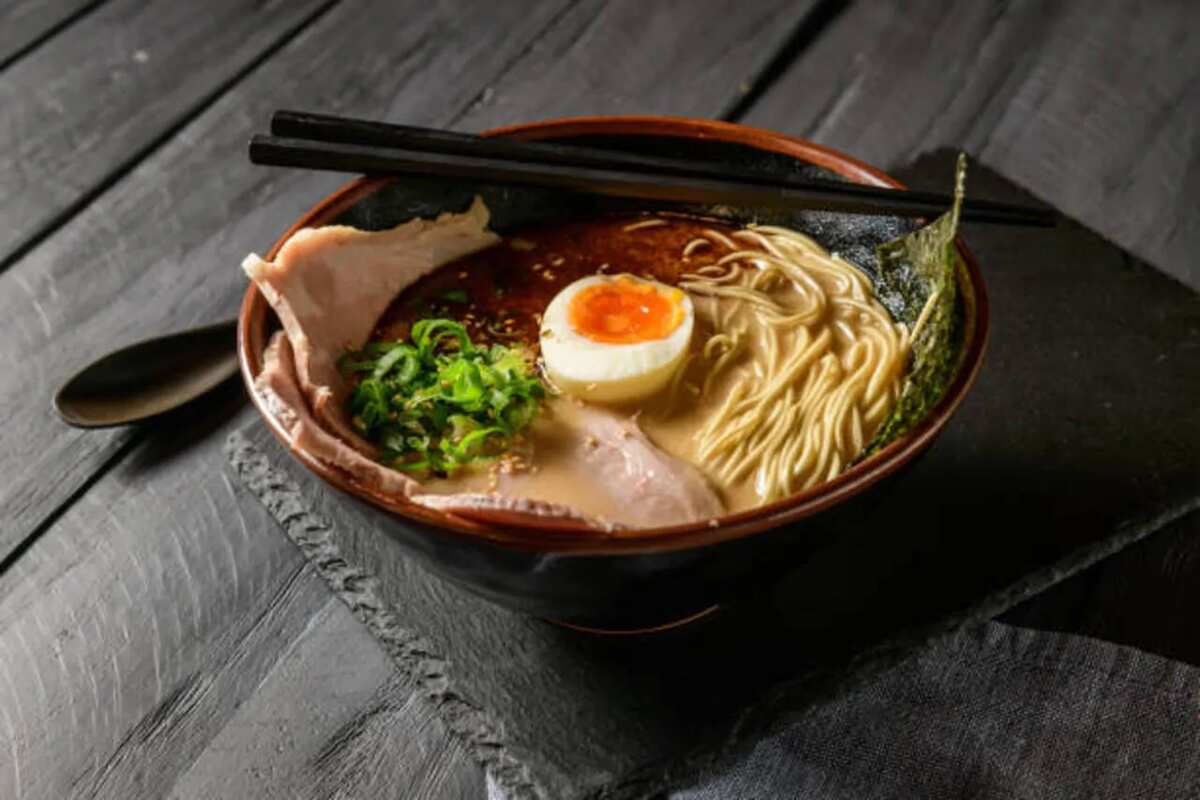
Confused between pho and ramen when you're in the mood for an Asian noodle soup? Let's look at the variations to aid in your decision. Both of them are delectable. These traditional Asian dishes are the epitome of hearty bowls. Each is packed with flavorful broths, succulent meats, and filling noodles. They hit the mark. Each time. The appearances of pho and ramen are very similar. But each is distinct due to a few key distinctions.
Traditional Vietnamese noodle soup pho (pronounced "fuh") is made with translucent rice noodles, a light, transparent broth, and a variety of fresh toppings. Pho noodles have a clear colour and are supple and chewy.
The chicken or beef bones used in pho are added to the amber-coloured soup, which is also spiced with charred onion, ginger, star anise, cinnamon, coriander seed, cardamom, cloves, fish sauce, and a little bit of sugar. After that, different beef or chicken parts are cooked in the broth before noodles and garnishes are added.
Ramen is a Japanese broth dish made using the same-named noodles. Water, salt, alkaline mineral water, and wheat flour are the ingredients used to make ramen noodles. They are solid in texture and golden in colour.
Ramen broth and toppings come in a variety of flavours. The type of noodles is what distinguishes ramen from other broth and noodle dishes. It's the kansui that gives wheat noodles their distinctive flavour and turns them into ramen noodles.
The 5 Key Differences Between Ramen And Pho:
Origin:
During the height of French colonialism in the late 19th century, Vietnam's most adored dish was created. Cows were mostly used as labour animals in Vietnam prior to the French influence, and beef consumption was uncommon. Long-term French rule led to an increase in the slaughter of cows and a rise in the demand for beef products. Byproducts like leftover bones and rough meat slices were used, but street sellers rapidly seized the opportunity to add cow parts to soups. Through this fusion of civilizations, Pho was created.
Because ramen is such a widely consumed staple food in Japan, many people think of it as a Japanese dish. The exact origins of this noodle dish are the subject of numerous theories, but a commonality appears in all of them. While the Japanese are known to have provided the broth to the dish, Chinese immigrants are thought to have brought ramen noodles to Japan in the early 20th century. After World War II, ramen establishments started to appear in Japan, and the dish quickly ingrained itself in the national psyche.
Noodles Type:
In pho and ramen, you can use any kind of noodle you like if you're in a rush. Nevertheless, a crucial component of pho is the use of rice noodles, which are far more delicate and light in weight than the wheat flour-based udon noodles that are needed to make ramen.
Broth:
Pho has a very light and fresh broth made from either beef or chicken broth with onion, ginger, coriander, fennel, and cloves. Whereas, in a ramen broth, the flavour is usually much stronger. And it comprises pork, chicken, anchovies, dried bonito, or vegetables.
Cooking Process:
Wheat noodles, broth, and toppings are the three main ingredients in ramen. Depending on the sort of ramen you are cooking, the broth-making procedure will change. Some are straightforward, while others—like tonkotsu—require a whole day's labour of love. Just combine the desired noodles and toppings with the prepared soup base.
On the other hand, making a broth from beef or chicken bones, boiling your chosen meat slices in the broth, adding the noodles, and garnishing are the primary processes in preparing a filling bowl of pho.
Toppings:
Both are incomplete without the toppings. The key to pho is using fresh ingredients. Among them are jalapenos, bean sprouts, scallions, basil, and limes. The predominant meat is beef. Ramen intensifies the umami. You can choose from toppings including pork, nori, soft-boiled eggs, lotus root, and mushrooms.
But is ramen superior to pho, or vice versa? It's a never-ending argument that is up to you. The healthier choice between the two is pho. The bone broth is loaded with spices and minerals. Numerous fresh ingredients are used in the toppings. Additionally, it is gluten-free. But perfecting the pho broth is no simple process.
The appropriate amount and ratio of spices must be used. There's no real answer when it comes to which dish is better; it simply depends on your taste and preferences. However, both of these are hearty, comforting meals that one can relish at any time of the day!